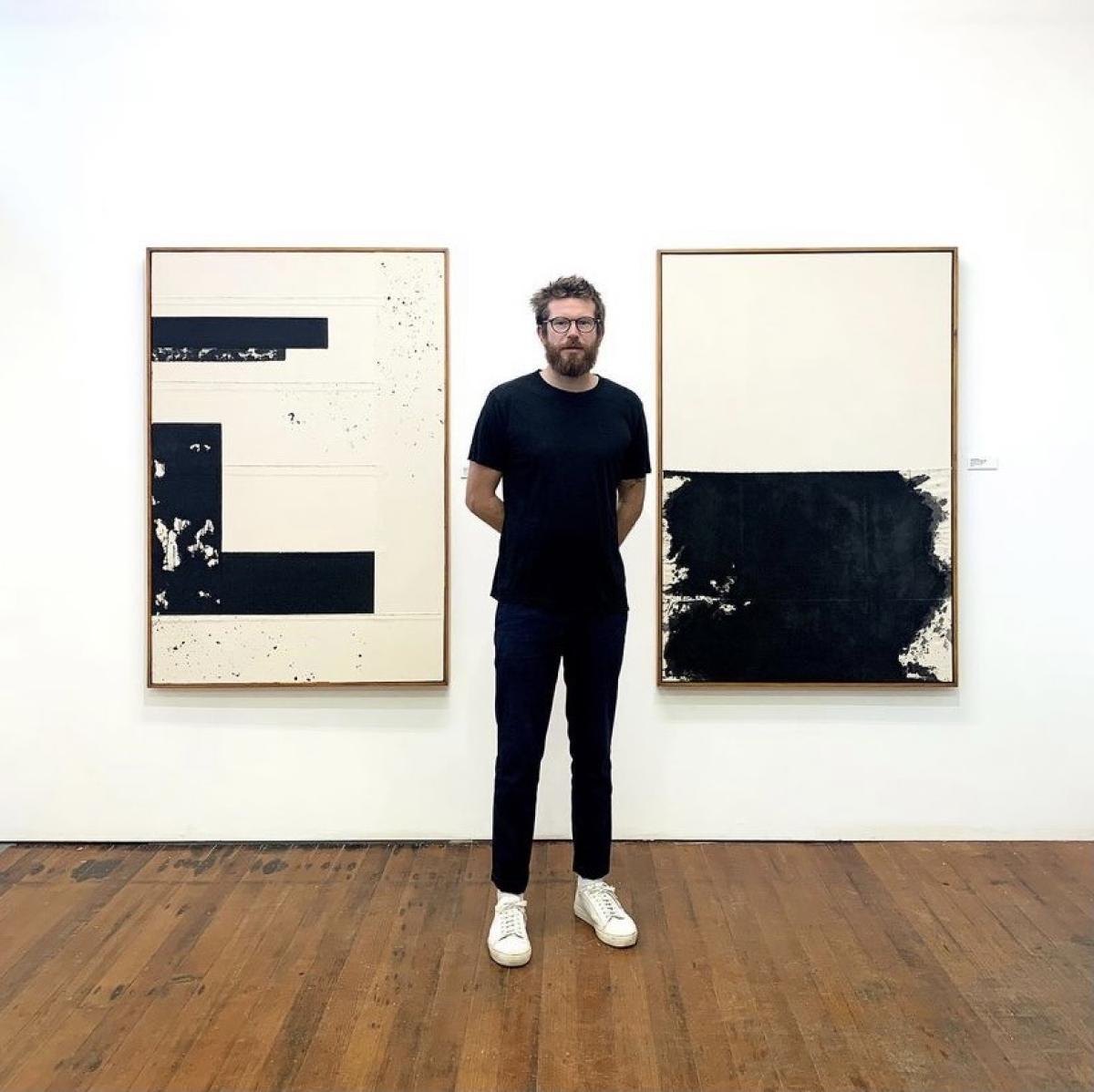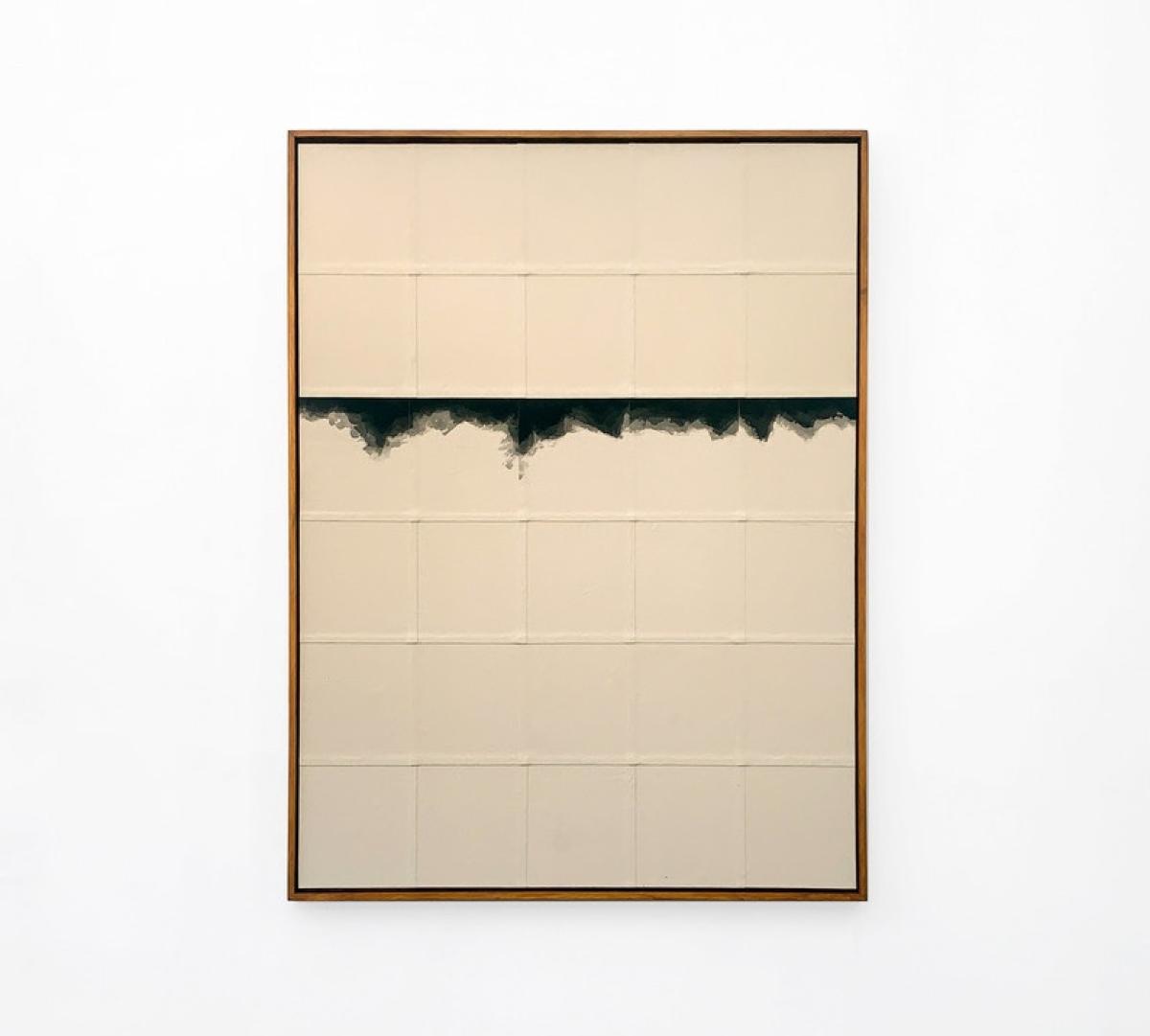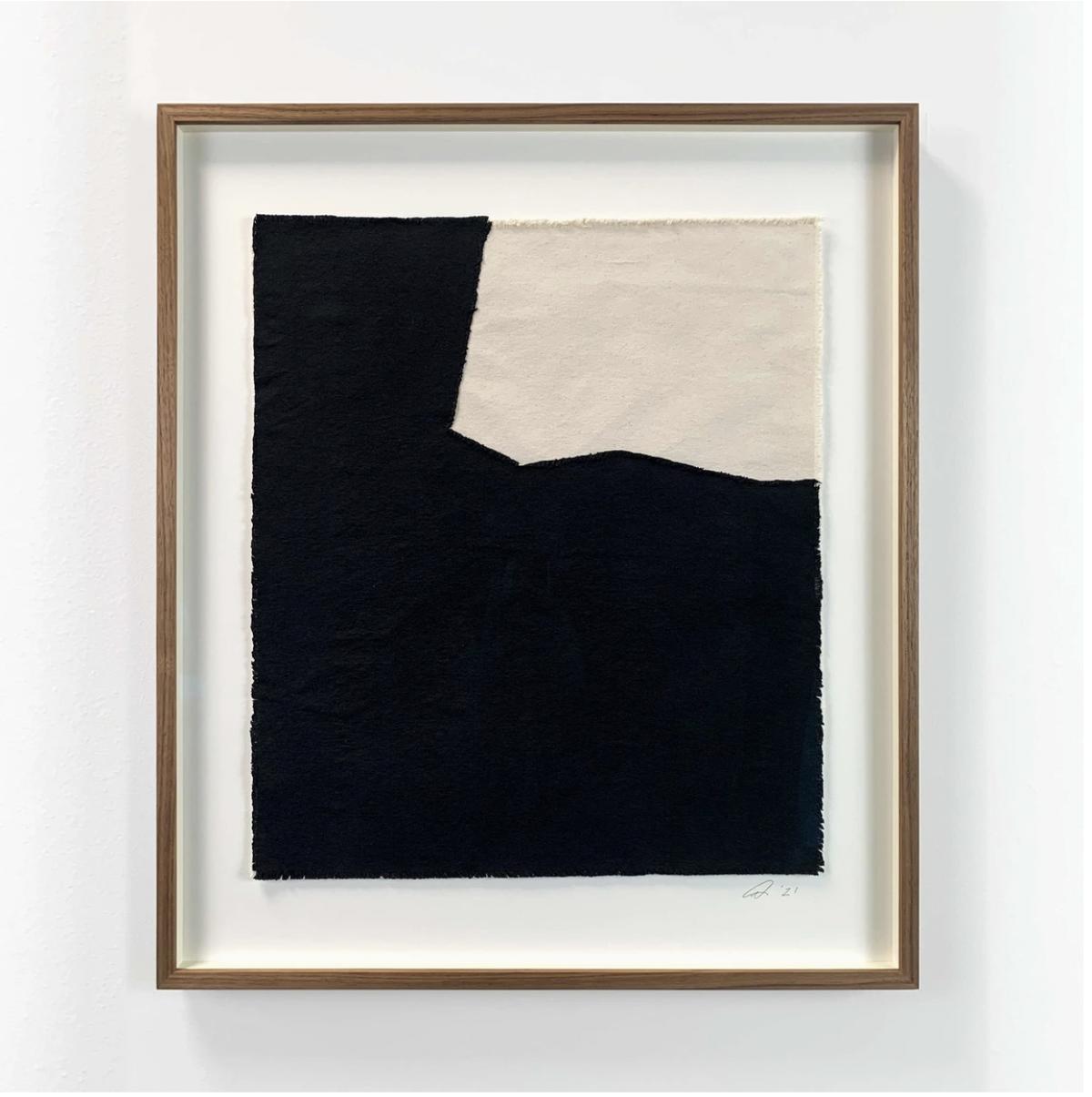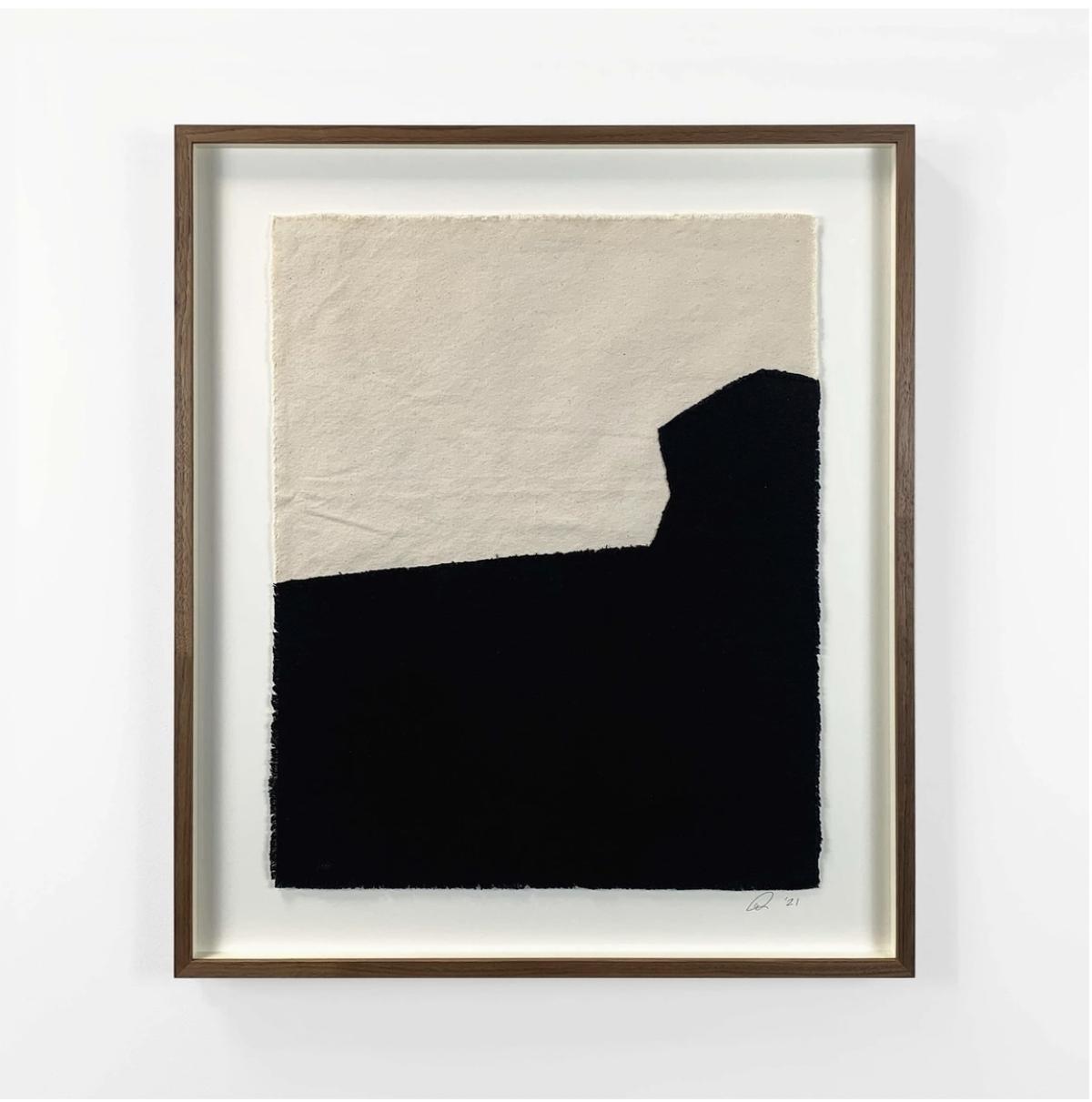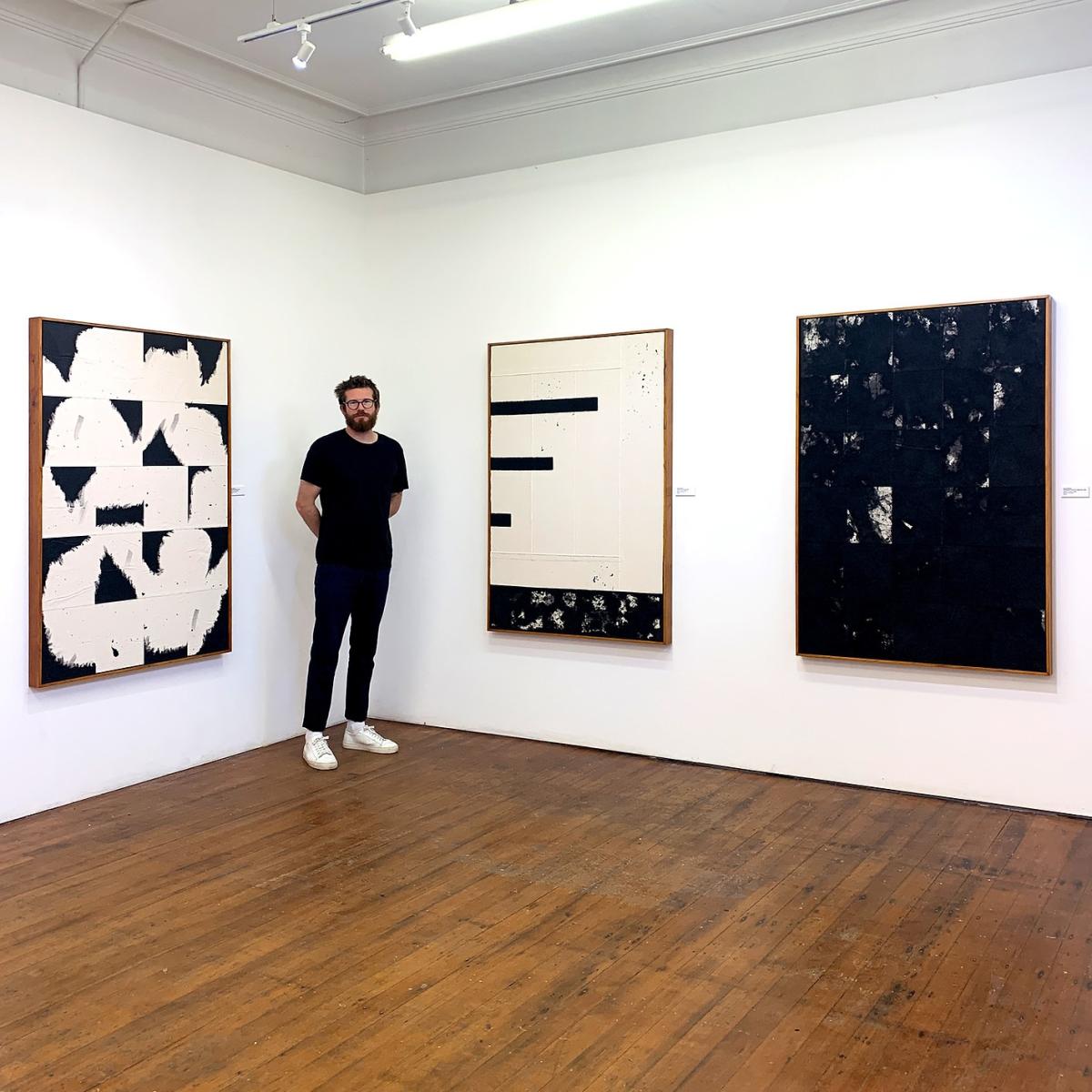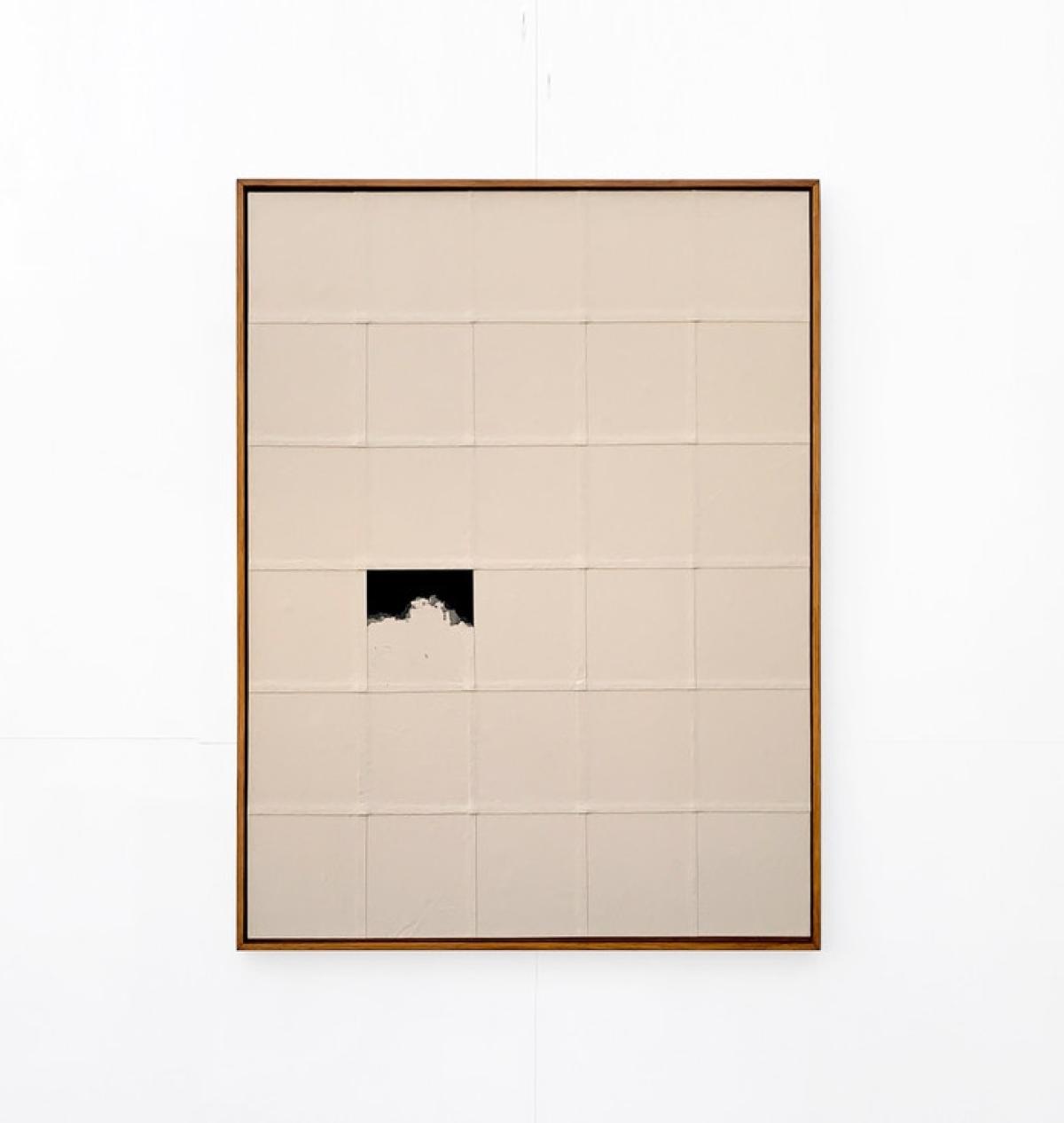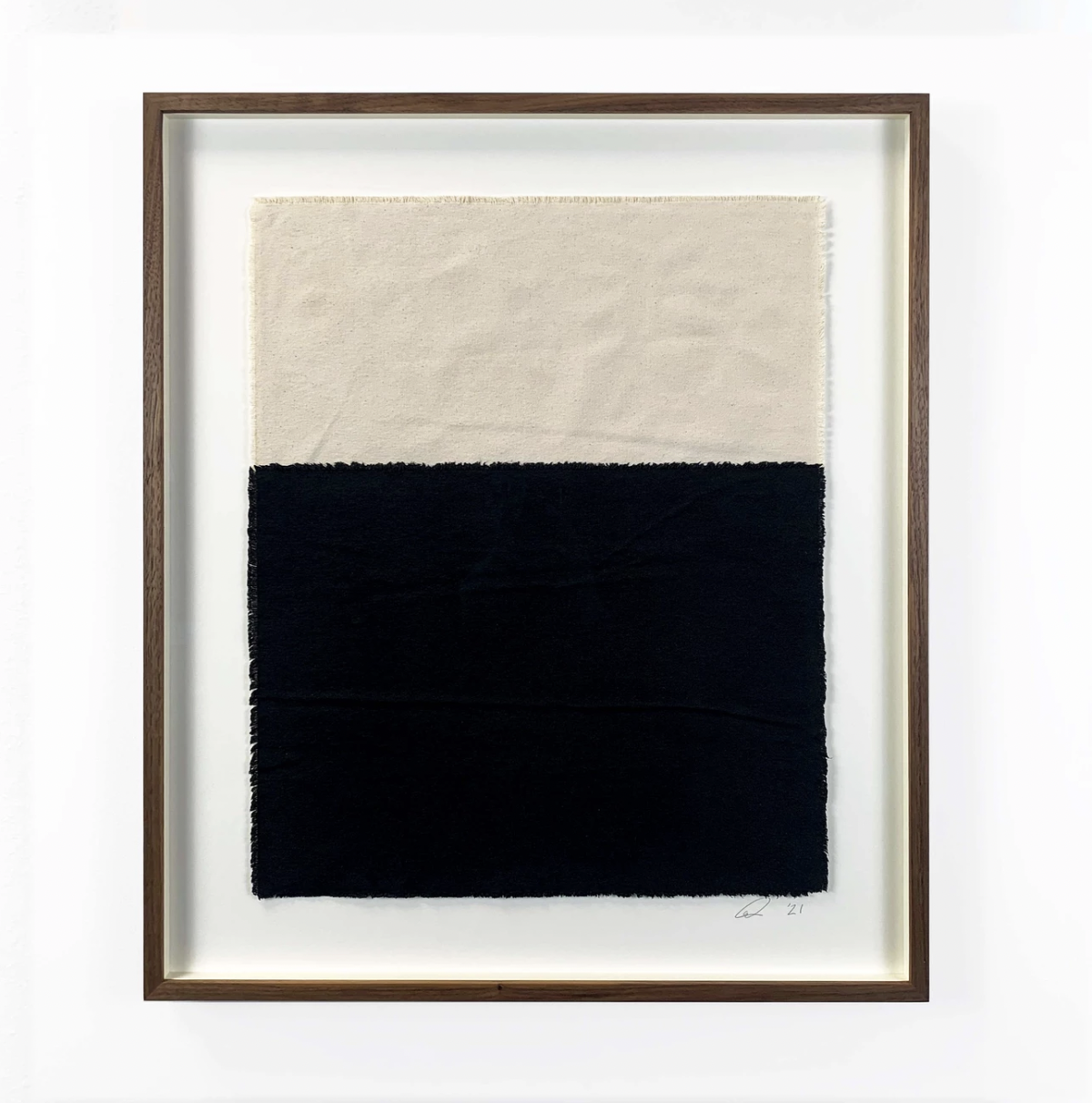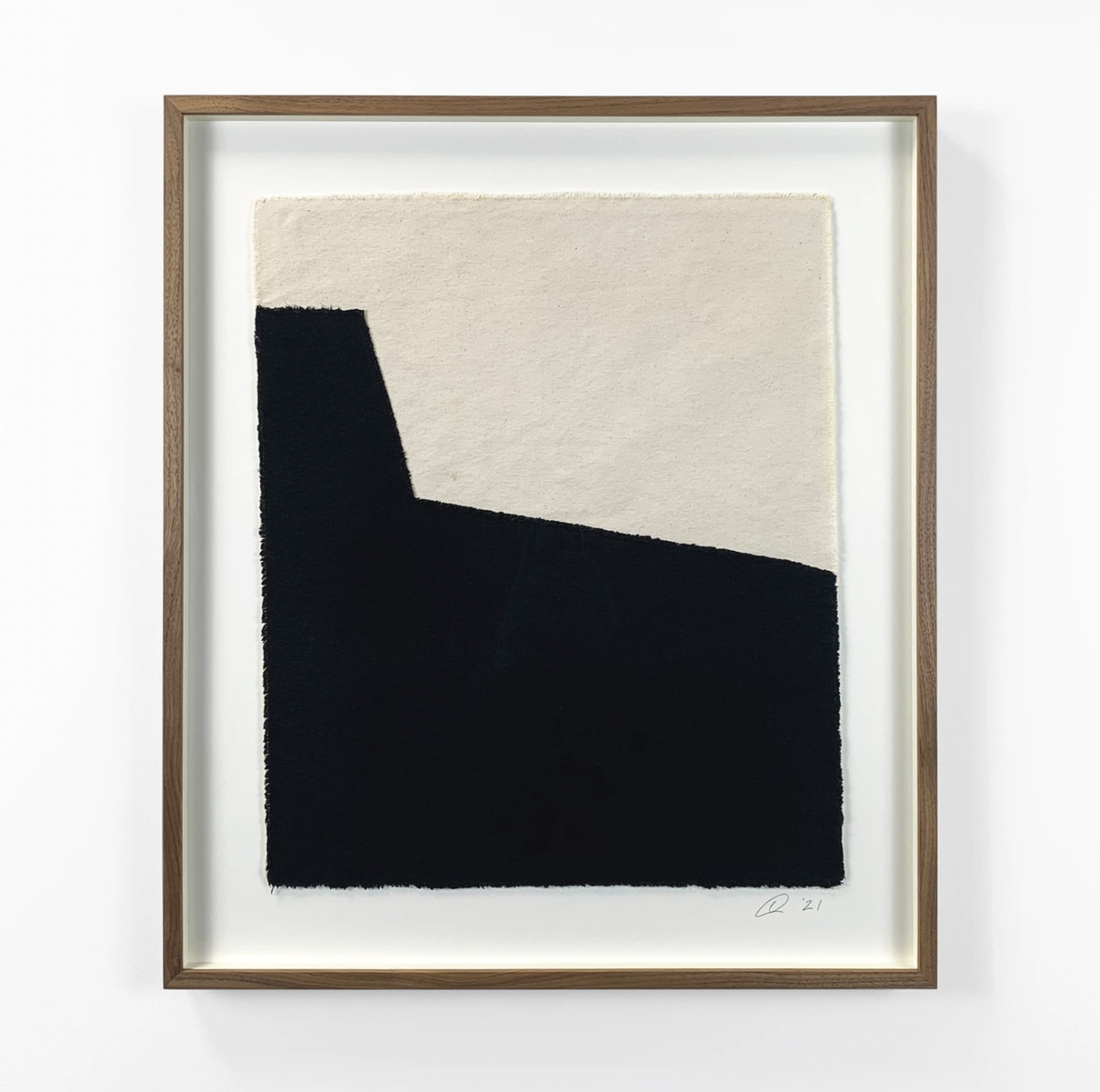Start building your dream
Modern Makers: Q&A with Henry Woolway
26 January 2022
Interviews
A selection of Henry Woolway’s most recent abstract artworks will be showcasing at Gabriel Scott’s London showroom, as part of our Modern Maker series.
Henry Woolway’s wide ranging body of work is a candid look at his relationship with life experiences both recent and from his childhood. Visually taking aesthetics from Scandinavian and European design and culture as well as early mid-century modern design, Woolway ties in simplistic and rudimental techniques giving the air of form over function or indeed a linear meaning to his work.
Woolway’s work reflects on the semi-rural upbringing and the simpler state of life one can take. Through stripping back the substance or noise, one can see the simple basic emotions or time locked statements in his work. The use of limited materials and colours allows this personal and honest look back, whilst still allowing the viewer to understand and find their own meanings.
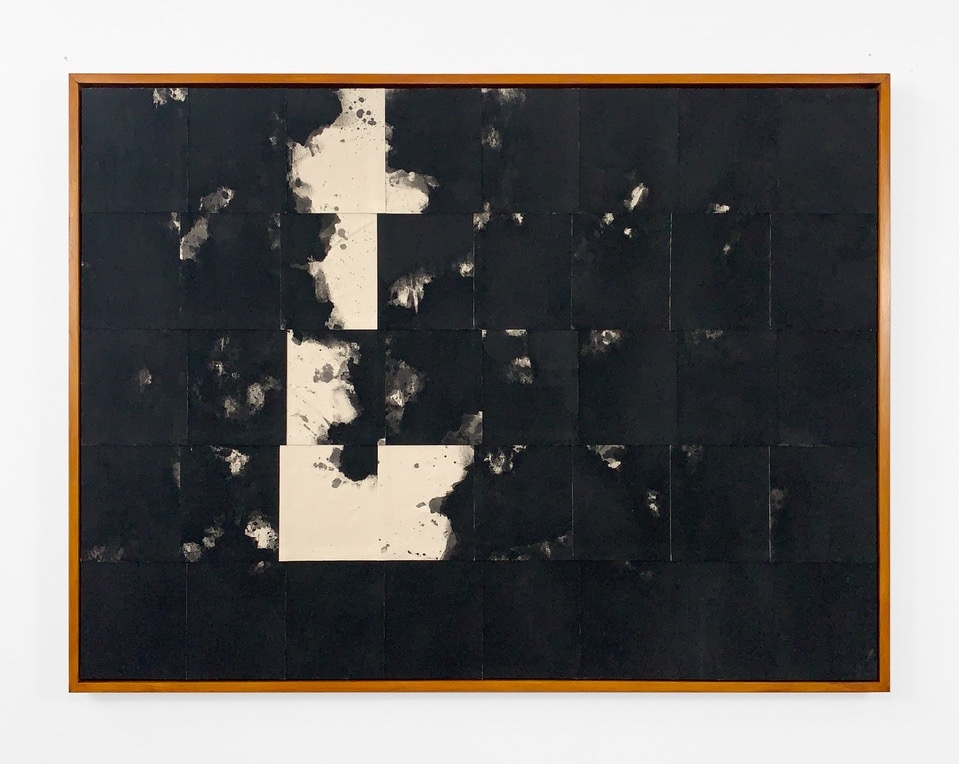
We had the pleasure of talking to Henry Woolway about his background in design and making and his recent endeavours into making this passion his full-time job.
GS: What's the main inspiration behind your work?
HW: I am inspired by minimalist contemporary art and mid-century architecture and design. I have always said I want my art to be like a well designed arm chair, they’re not to overpower a room, they’re to sit in rather than stand out. I wanted to create paintings that capture a moment of calmness, either from my childhood or memory more recent. I have always been drawn towards minimalism and my belief is that to create something of quality deemed minimalist you have to produce something confident and clear with no compromise.
GS: How did you get into your craft?
HW: I have always loved creating. I really didn’t do anything majorly creative outside of my career for most of my twenties. Later in my 20’s I pushed to be creative and played around with different materials trying to find the right medium to suit my vision or to even understand my vision. When I started using canvas in 2020 it felt natural. It was completely by accident but as soon as I made my original paintings in my style I use now I knew it was what I had been looking for.
GS: What's your background in?
HW: I have worked in TV and Film for 11 years, for the last 7 years I’ve been a Supervising Art Director working on large TV dramas, films, music videos and TV commercials. I studied Tv and Film Set Design at the University of Glamorgan graduating in 2010. I have recently left the industry to concentrate on my art. I don't have any formal art training which I feel helps me stay true to my vision without being lumbered with expectations or limitations of other people's work or input.
GS: How do you see your work progressing?
HW: I want to keep pushing minimalism with texture and simple forms. I will continue to use layered, torn and ripped canvas with simple colours. I have started bringing in ambers to my work to play alongside the black and light tones of the canvas. I want to bring in more layering and increasing texture. I love the simplicity of Rothko paintings and to do similar with the same feeling in my work would be something I’d like to achieve.
GS: Are you interested in exploring other materials or crafts?
HW: I’m currently experimenting with plaster to make pieces with texture and relief. I love texture, the way light plays on it creating shadows and different shades on the work allows me to work in minimal colours but still to give the sense of depth. The plaster pieces would still sit in the same aesthetics as my current paintings. Simple with subtle changes in texture and shapes. The plaster's natural colour is similar to canvas colour, it's a very neutral colour, slightly warm which works well with black and a nice warm frame.
GS: What does the making process look like for you?
HW: After working out the look and more importantly the composition and weight of the painting by drawing a small thumbnail sketch I cut and tear the canvas required. Whilst doing this I have to take into account the shrinking of the canvas which happens when I whitewash and dye it. The dyeing process can take 10 layers to get the build up of depth and the gradient of tone from the canvas colour to the darkest black. I then start glueing the canvas to a frame which has a stretched cloth on or a back board. Building up the layers by overlapping the canvas making sure the frayed edges are visible.
GS: How long does the making process take?
HW: My pieces come together relatively quickly. The dying of the canvas and whitewashing take time but mainly in the drying process. I plan my pieces alot and I know what they will look like when completed. I always draw small thumbnail sketches of my paintings which help me work out composition. It's this which makes the actual making process short in comparison. One of my favourite artists Cy Twombly said “When I work, I work very fast, but preparing to work can take any length of time”. This is how I feel about my process.
GS: What do you find the most difficult & enjoyable part of making?
HW: The most difficult thing is having a strong enough conviction to see your initial idea through to completion. The most enjoyable part of making for me is to have a final piece come together from nothing but canvas and black paint into something which has depth, feeling and integrity.
GS: When did you start making & why?
HW: I started seriously getting involved in making and creating art in 2017. I rented a studio in Peckham. I was there for 3 years. Whilst I was there I was more interested in sculptural work using materials such as metal, plasticine, resin, plaster and vinyl. I moved to Liverpool in 2019 and started painting. In March 2020 during the first lockdown I had some canvas frames and unstretched canvas left over from another project. I made 4 pieces called my ‘Scraps Series’ which have evolved into the style I am working on today. The 4 first four pieces I made in March 2020 was the first time I'd felt like I was making something true to myself.
GS: What does your work say about you?
HW: My work is all about less is more and quality and thought in the finishes. I like the simple things in life done well and I hope this is what I achieve in my work.
GS: Do you have a favorite piece in your collection? If so, why?
HW: I am very happy with ‘A Brief Glimpse Of Tomorrow’ which I painted in 2020 whilst in Liverpool. The simplicity of it with the marbling from the dyeing makes a well balanced and minimalist piece. It is predominantly black which works nicely with the richness and warmth of the frame.
GS: What are five collections/art pieces you have been looking at lately?
- Helen Cammock - Concrete Feathers and Porcelain Tacks
- Sunday-S Contemporary Gallery - This gallery has the most amazing artists and I love the shows they have on. I would love to go this year and see them again.
- Otis Jones - Any of his works really, they're all so textured and well crafted.
- Richie Culver - ‘You Just Couldn’t See It’.
- Ethan Cook - ‘Fields’. I love how something so big and so simple can be so effective.
GS: Where can people see your work?
Instagram: @henrywoolwayart
Exhibiting at: Gabriel Scott London Showroom - 12 Old Burlington Street, Mayfair W1S 3AH

